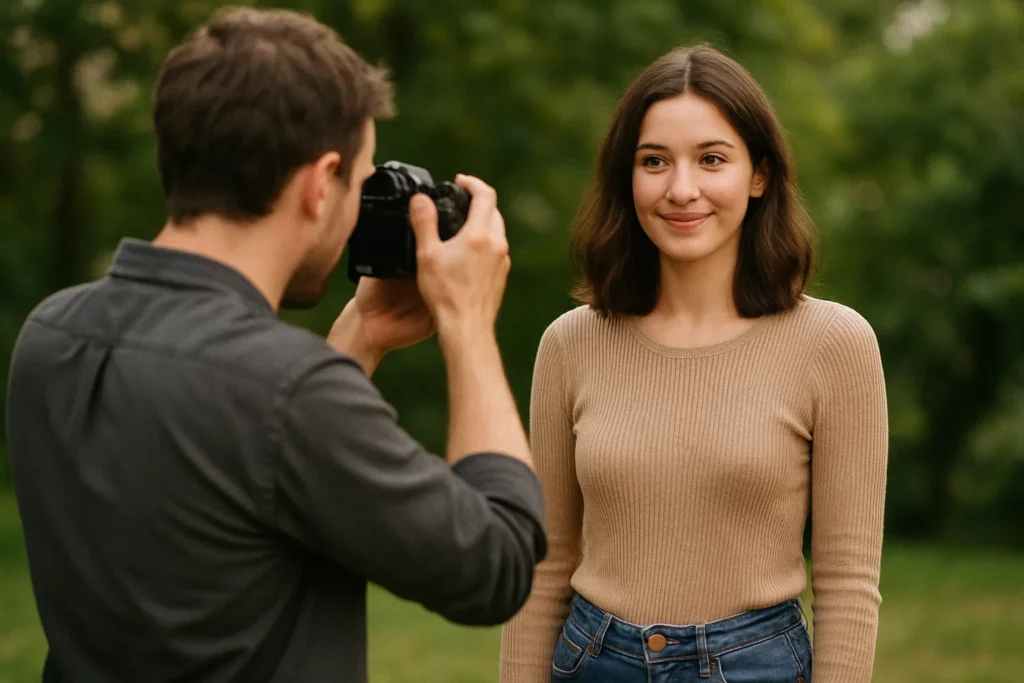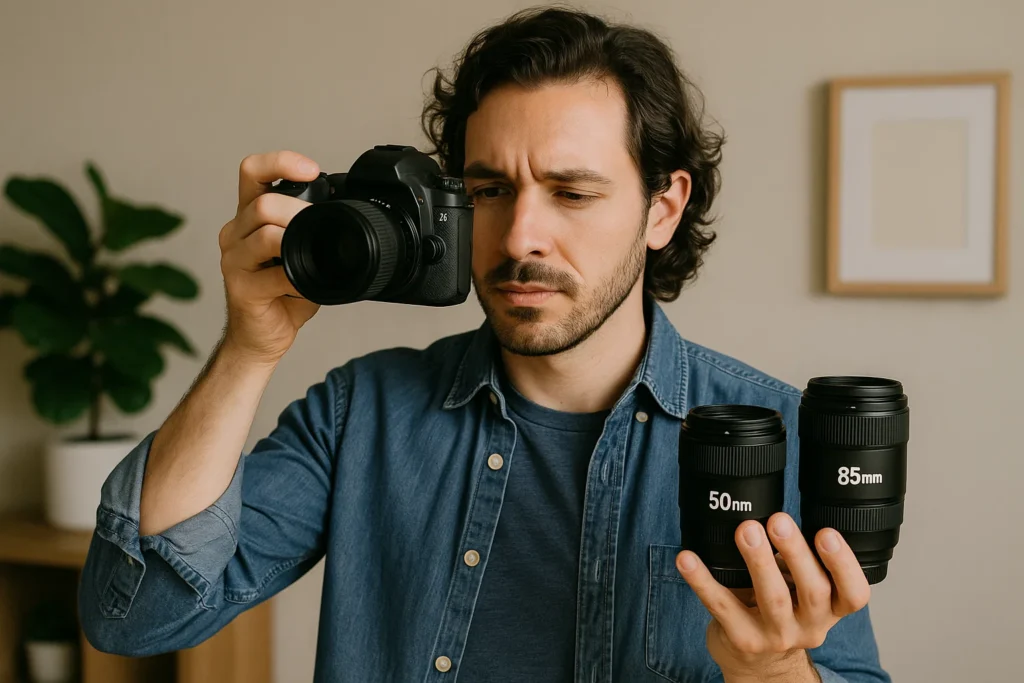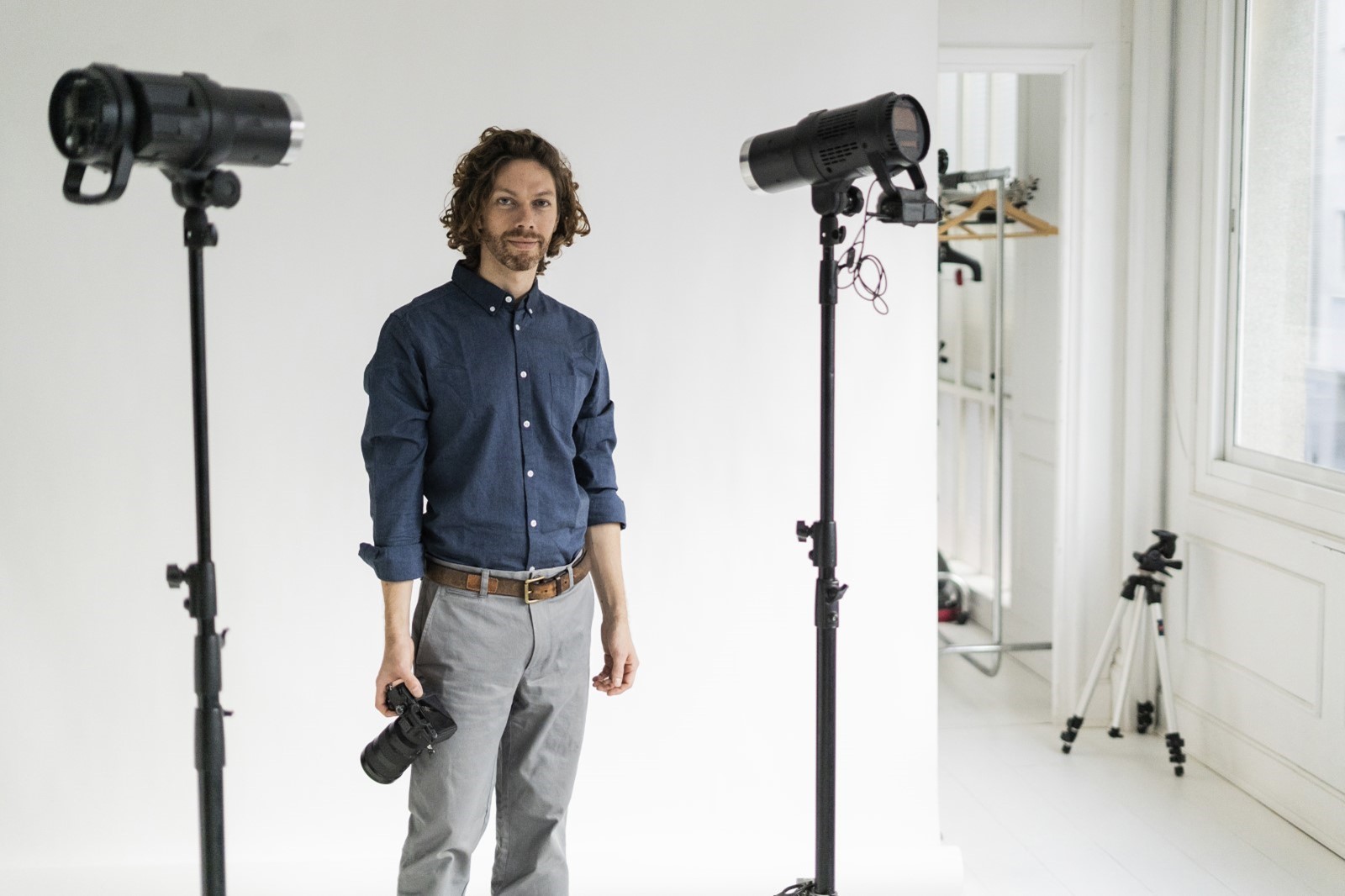Table of Contents
This blog post may contain affiliate links. As an Amazon Associate I earn from qualifying purchases.
How to Take Better Portrait Photos: A Definitive Guide

Portrait photography is one of the most rewarding—and challenging—genres. A truly great portrait captures not just a face, but personality, emotion, light, and connection. In this guide, you’ll learn how to elevate your portrait work through technique, mindset, and consistent practice.
You’ll discover:
- Key technical foundations (exposure, lens choice, focus)
- Lighting strategies that flatter the subject
- Posing tips, composition, and working with models
- Creative ideas and advanced techniques
- Common mistakes to avoid
- Snippet-friendly FAQs for quick reference
By the end, you’ll feel confident building portraits that engage, resonate, and stand out.
Featured Snippet Answer
To take better portrait photos, focus on lighting your subject, placing sharp focus on the eyes, using a flattering focal length and aperture, guiding your subject into natural poses, and building rapport to create genuine expressions. Combine that with thoughtful composition, background control, and post-processing to elevate the final image.
Why Portraits Are a Unique Challenge

- Human faces convey emotion — small changes in gaze, expression, or lighting make big differences.
- Viewers instinctively look at the eyes first — they must be sharp.
- Portraits blend technical skill and human interaction. You must manage both light and relationship.
- The slightest distortion or poor lighting can ruin a portrait — but when done right, portraits are deeply compelling.
To outshine typical advice, this guide weaves practical exercises, psychological insight into working with people, and tips that apply to both DSLR and mirrorless systems.
Master the Technical Basics
Exposure & the “Portrait Triangle”
Portraits aren’t exempt from the exposure triangle (aperture, shutter speed, ISO). But your priorities often shift:
- Use a wide aperture (e.g. f/1.8 to f/4) to soften backgrounds and isolate your subject.
- Maintain a fast enough shutter speed to avoid motion blur — especially for handheld or slight movement (e.g. 1/200s or faster).
- Use ISO prudently — bump it only as needed to preserve light without undue noise.
When backgrounds are bright (backlit), expose for the face first and let the background fall away or drop into silhouette.
Choose a Flattering Focal Length

Lens choice greatly affects the way a subject’s features appear:
- Standard portrait sweet spots lie in the 85mm to 105mm (full-frame equivalent) range to minimize distortion.
- Lenses below ~50mm (wide angle) tend to exaggerate facial features — often unflattering for headshots.
- Telephoto lenses (e.g. 135mm) compress perspective and give a pleasing “look.”
- Zoom lenses are fine — just pick a focal length that flatters your subject and step back accordingly.
Focus & Depth of Field
- Eyes must be tack sharp. The moment you lose focus on the eyes, the impact of the portrait diminishes.
- Use single-point autofocus (or eye-detection if your camera supports it) to control precisely where the focus lands.
- Keep the depth of field narrow, but ensure the subject’s key elements (eyes, nose) remain within it.
Lighting Strategies That Work
Lighting is the soul of a portrait. Even simple setups can yield stunning results.
Natural Light Portraits
- Soft, diffused daylight (e.g. shade, overcast skies) is incredibly flattering.
- Use a reflector or white card to fill shadows.
- Backlit or rim-lit portraits (sun behind the subject) can produce hair-glow and separation — use fill in the front to balance exposure.
- Indoors, position your subject near a large window and diffuse with sheer curtains.
Direction & Quality of Light
- 45° side lighting or Rembrandt lighting adds depth and dimension.
- Loop lighting (light slightly above and to one side) is a safe and pleasing starting point for faces.
- Butterfly / Paramount lighting (light above and centered) flatters faces but can emphasize shadows under the nose or chin.
- Match lighting mood to subject expression: soft and even for portraits, directional and moody for dramatic or editorial looks.
Using Flash & Modifiers
- A softbox, umbrella, or diffuser helps soften harsh flash.
- Off-camera flash gives control — place it at an angle rather than front-facing for more dimension.
- Use fill flash subtly to lift shadows without flattening the face.
- For outdoor portraits, balance flash with ambient light to avoid unnatural lighting contrast.
https://www.fujifilm-x.com/en-gb/learning-centre/five-tips-for-better-portraits
Composition, Framing & Background
Rule of Thirds & Beyond
- Position your subject’s eyes on one of the top third gridlines — viewers’ gaze naturally rests there.
- Leave “lead room” or headroom in the direction the subject faces — avoid cutting off limbs or heads at awkward places.
- Don’t center everything rigidly — symmetry works in certain contexts, but variation often engages more.
Background Control
- Choose clean, non-distracting backgrounds. Busy or cluttered backgrounds steal focus.
- Use depth (foreground interest or background blur) to add three-dimensionality.
- Be mindful of background lines or objects — avoid poles or tree branches appearing to grow from the subject’s head.
Angles, Perspective & Vantage
- Shooting slightly above eye level often flatters facial structure.
- Shooting from below can feel more heroic or imposing (but use carefully).
- Move around — a 5° shift can change light direction, shadow placement, and expression.
Posing & Working with Subjects

Build Rapport & Confidence
- Start with light conversation, simple shots, and reassure your subject.
- Encourage movement, natural gestures, and instruct with simple cues.
- Show them previews — sometimes audience feedback helps them relax.
Basic Posing Tips
- Turn shoulders slightly away from the camera to avoid a “flat” look.
- Lean your subject subtly toward the camera to close distance.
- Ask subjects to shift weight to the back leg for a relaxed stance.
- Hands are tricky — keep them loose, natural, or have them hold something (a prop, jacket, hair).
- Guide chin position (slightly down, not tucked) to keep jawline clean.
Corrective Posing
From pro photographers:
- For heavier subjects, turn them 30–45° and shoot from a slightly elevated position to slim the silhouette. (turn0search21)
- Use lighting to complement pose, not fight it.
- Let your subject’s “best side” lead composition.
Creative & Advanced Techniques
Environmental Portraits
Place the subject within their environment — a musician in their studio, an artist in their workspace, someone at their window. These portraits tell stories and add depth. (turn0search19)
Candid & Emotional Moments
Sometimes the most powerful portraits are unposed. Let your subject move, laugh, talk, reflect — capture glimpses between directions. (turn0search3)
Break the Rules
- Silhouettes: expose for the background rather than the subject.
- High-key portraits: intentionally overexpose for light, airy feel.
- Minimalism: empty space, soft tones, negative space.
- Color accents or flare: use gels, backlight, or prisms to add creative flair.
Post-Processing Tips
- Prioritize skin tones and clarity — avoid over-smoothing or unnatural glow.
- Use dodge and burn to subtly shape light on face and hair.
- Retouch selectively — focus on eyes, catchlights, and removing temporary distractions (lint, stray hair).
- Use subtle sharpening and noise reduction carefully — portraits require a fine balance.
- If shooting RAW, your flexibility in tonal, white balance, and exposure adjustments gives you creative control.
Common Mistakes & How to Avoid Them
- Putting too much trust in auto modes — manually control exposure and focus.
- Overly tight crops that cut off fingers, heads, or limbs.
- Distracting backgrounds that compete with the subject.
- Flat, frontal lighting (which can kill texture and dimension).
- Poor posing: stiff, symmetrical, or ignoring jawline and neck.
- Ignoring the catchlight — eyes without sparkle feel lifeless.
FAQs
What is the best aperture for portraits?
Start around f/2.8 to f/4 — wide enough for background blur yet deep enough to keep eyes sharp.
Should I always focus on the eye?
Yes. The front eye (closest to camera) is typically the critical point for sharpness.
Is natural light better than flash for portraits?
Natural diffused light is ideal, but flash gives you control when ambient conditions are harsh or unpredictable.
Which focal length is best for portraits?
Between 85mm and 105mm (full-frame equivalent) is classic for flattering portraits.
How do I make someone relax during a portrait shoot?
Use conversation, music, simple direction, and show them proofs. Let them see their ability and feel involved.
Should I shoot in color or black & white?
Color is default; black & white works well when emotion or contrast is strong, or when you want to strip distractions.
Final Thoughts
Great portraits are born from technical mastery and human connection. Master your light, lens, focus, and direction — but also be present with your subject. The more you practice, experiment, and learn from each session, the better your portraits will become.
Brought to you by Amateur Photographer Guide — your source for practical wisdom, gear guidance, and photographic growth.

